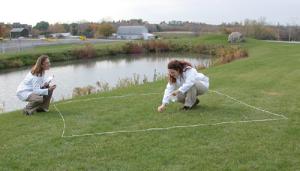Sphenisciformes facts; Plus a free student handout from AccessScience
Penguins are a beloved flightless aquatic bird. Your class will be delighted to learn about their characteristics, habitat, and evolution.
Access to this content is available to Ward's World readers for free from McGraw Hill's AccessScience, an award-winning, digital STEM resource containing exclusive articles written by expert scientists and engineers; biographies of well-known scientific figures; science news, videos, and animations; and much, much more.
Instructors can use AccessScience to guide students on their research project journeys, to help students understand scientific concepts, to support distance learning efforts, in flipped classroom approaches, and in countless other ways.
Ward’s World and AccessScience have partnered to offer educators a no-obligation, free trial subscription to AccessScience. Request your free trial today to discover how valuable AccessScience can be for you and your students! Get your free trial now.
Sphenisciformes. Try saying that three times fast. It’s probably easier to just say penguins.
Sphenisciformes are so flippin’ cool that every student will want to learn all about them. So, whether you’re celebrating National Bird Day on January 5, Bird Day on May 4, or International Bird Day on May 8, this flightless, aquatic bird is worthy of recognition.
How many penguins are there?
Penguins evolved from dinosaurs about 60 million years ago. Taxonomists agree that there are at least 16 penguin species; depending on who you ask, there could be up to 22! “Waddle” the curious investigators in your class decide once they learn the facts?
Two Oceans Aquarium lists a whopping 28 different types of penguins:
- African penguin
- Northern rockhopper penguin
- King penguin
- Adélie penguin
- Fairy penguin
- Yellow-eyed penguin
- Chinstrap penguin
- Magellanic penguin
- Southern rockhopper penguin
- Macaroni penguin
- Australian little penguins
- Emperor penguin
- Snares penguin
- Galápagos penguin
- Erect-crested penguin
- Royal penguin
- Humboldt penguin
- Eastern rockhopper penguin
- Fiordland penguin
- Allied king penguin
- Falkland Island gentoo penguin
- Ellsworth's gentoo penguin
- Kerguelen gentoo penguin
- South Georgia gentoo penguin
- White-flippered penguin
- Cook Strait little penguin
- North Island little penguin
- Chatham Island little penguin
However, you count ‘em, these delightful birds will capture the imagination of your students. After all, there’s no other animal that can endure the arctic's harsh conditions while clad in an elegant feathered tuxedo.
What’s up with the cryptic coloration of penguins?
It may be elegant, but the penguin's plumage is not for a night out on the town; it’s for camouflage while swimming.
The black plumage on their back is hard for predators to spot from above, while the white plumage on their front fools predators in the sea into thinking it’s just the sun’s reflection. Camaflouging using this technique is called countershading. Before any predators think they have it all figured out, they should know that penguin colors range from golden yellows to slate blues across all penguin species.
Set your GPS
Penguins are the second most threatened group of seabirds. Most penguins are at risk from changes in our oceans due to pollution, fisheries mismanagement, and the effects of climate change. The Global Penguin Society (GPS) promotes penguin conservation and advocates for sustainable healthy activities in the ocean. It’s never too early to inspire your students to learn how to help make a difference for endangered animals.
Download McGraw Hill's AccessScience article on Sphenisciformes above to share with your students; these in-depth and insightful facts about penguins can help build your lesson plans. The free download also includes assessment questions and answers you can use to test student understanding. It’s a valuable resource covering an exciting topic.
Download McGraw Hill's AccessScience Teacher Answer key for this article here.
Recommended products
[StartProductBlock]

The Audubon Society Field Guides
Easy-to-use guides feature full-color photographs of living specimens as you would see them in their natural habitats, making identification of specimens a breeze.
[EndProductBlock]
[StartProductBlock]

Ward's® Birds And Worms: Modeling Natural Selection
This simple demonstration of the relationship between adaptations and natural selection gets students away from their desks.
[EndProductBlock]
